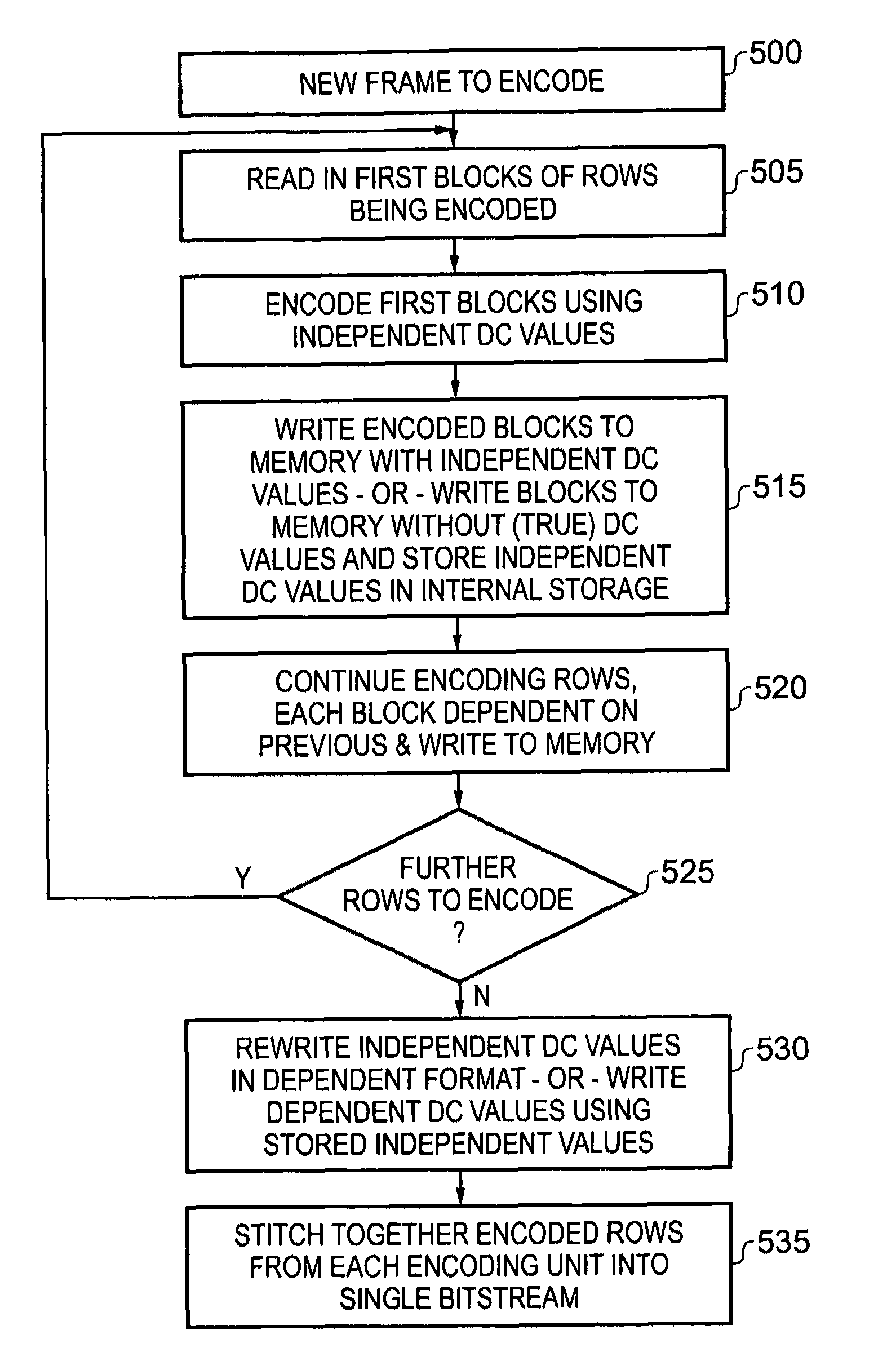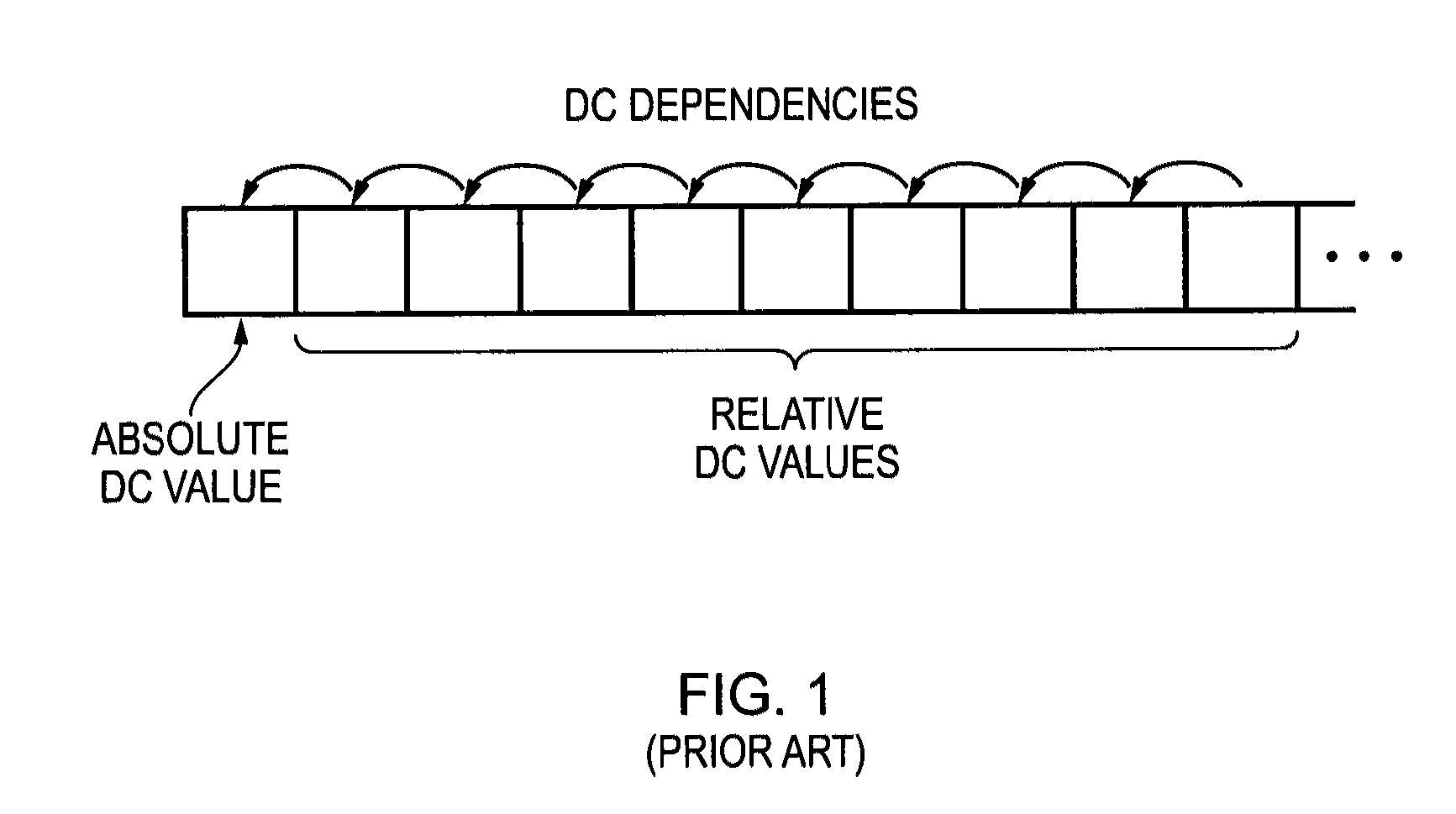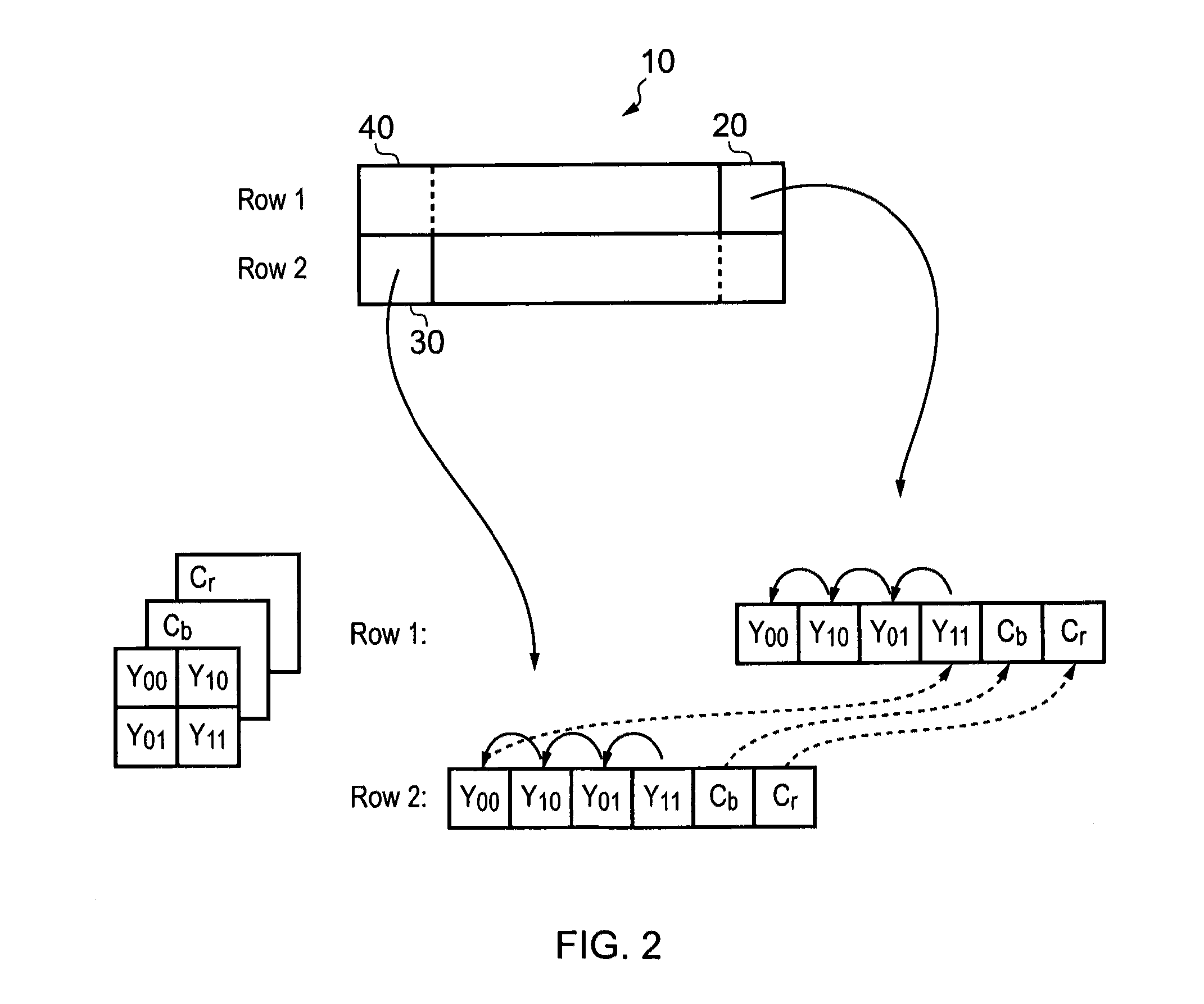Parallel image encoding
a parallel image and encoding technology, applied in the field of encoding image data, can solve the problems of significant demands on the system in terms of buffer capacity and memory bandwidth, and cannot be easily adapted to such parallelization, and achieve the effect of large storage capacity and high memory bandwidth capacity
- Summary
- Abstract
- Description
- Claims
- Application Information
AI Technical Summary
Benefits of technology
Problems solved by technology
Method used
Image
Examples
Embodiment Construction
[0053]FIG. 1 schematically illustrates a sequence of encoded blocks of pixels in a predetermined image encoding format such as one of the JPEG formats. The first block of pixels in the sequence is independently encoded and its characteristic encoding value (DC) is encoded in absolute terms. The following blocks of pixels however are each encoded with reference to the preceding block of pixels, wherein the characteristic encoding value for each block of pixels is dependently encoded, each characteristic encoding value (DC value) being encoded as a relative value referring to the previous characteristic encoding value. An entire frame of image data can be encoded as such a sequence, with the sequence of blocks following the familiar raster scan pattern through the frame. The sequential nature of the DC dependencies schematically illustrated in FIG. 1 demonstrates a difficulty for the parallelization of the encoding task, because in order to encode any given dependently encoded block o...
PUM
 Login to View More
Login to View More Abstract
Description
Claims
Application Information
 Login to View More
Login to View More - R&D
- Intellectual Property
- Life Sciences
- Materials
- Tech Scout
- Unparalleled Data Quality
- Higher Quality Content
- 60% Fewer Hallucinations
Browse by: Latest US Patents, China's latest patents, Technical Efficacy Thesaurus, Application Domain, Technology Topic, Popular Technical Reports.
© 2025 PatSnap. All rights reserved.Legal|Privacy policy|Modern Slavery Act Transparency Statement|Sitemap|About US| Contact US: help@patsnap.com



